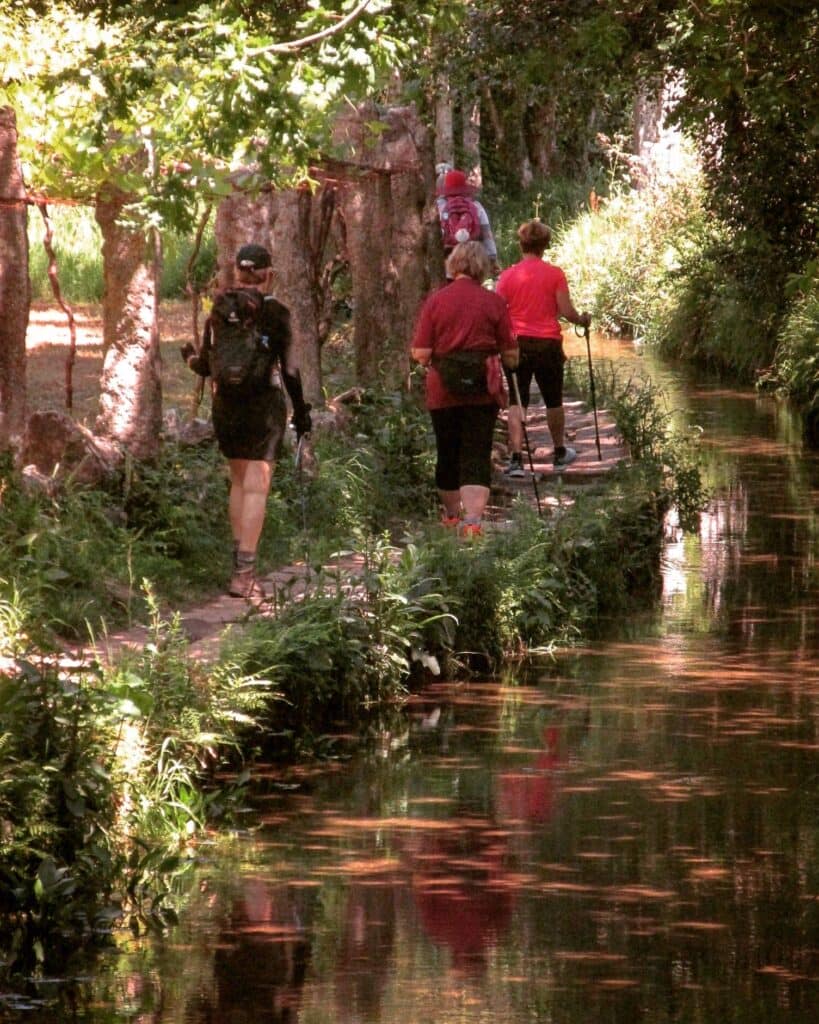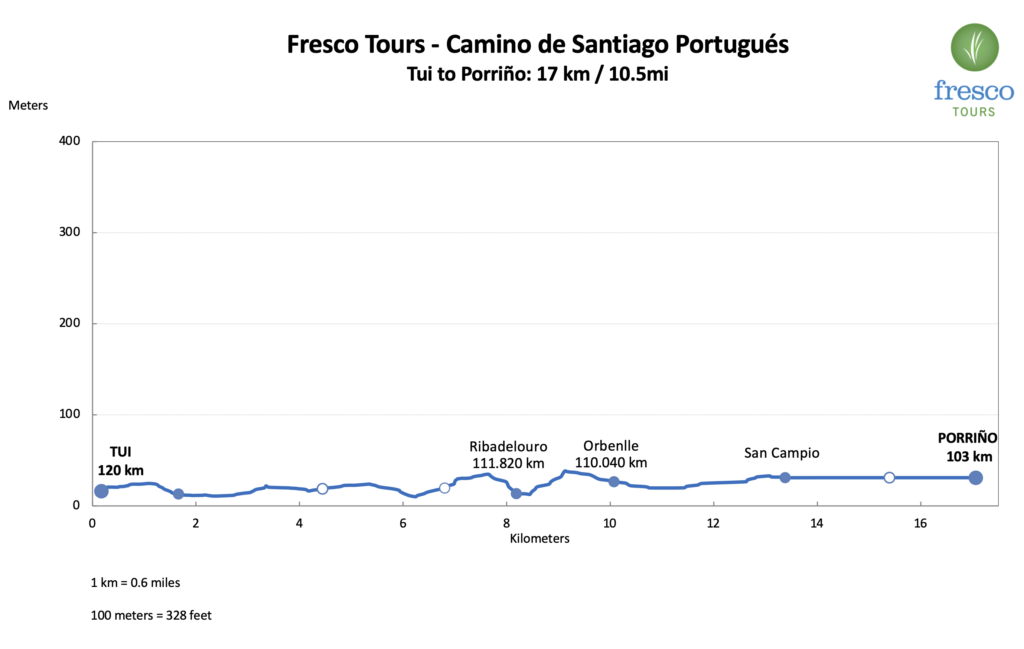Today we begin our Camino in Spain, walking from Tui to Porriño. Before we leave the town of Tui we visit the historic quarter to see the fortress-like Gothic Cathedral of Santa María, with its stunning west door. The cathedral was started in the late 11th century and it was finished 150 years later. Thus, and in line with many other cathedrals, the style progressively moved from Romanesque to Gothic. Its fortress-like appearance may have been because at the time of its construction Tui was already an important and wealthy city that was frequently attacked by Saracen pirates from the southern Muslim kingdoms in present day Portugal, Vikings from northern Europe or even the Christian Kingdom of Portugal.

As we depart Tui we will come upon a small forest where we will reach the picturesque San Telmo’s Bridge. The bridge is also called the Bridge of Fever by the locals, as this is where tradition believes that San Telmo fell ill on his way to Santiago with a high fever that would kill him shortly afterwards.
The first village we will encounter after a refreshing walk through the woods is Ribadelouro (riverbank of the Louro). The Camino leaves town by a set of five cruceiros in a little park. These mark the spot where the Romanesque Church of Saint Mary Magdalene used to stand. Local tradition says that Saint Mary Magdelene helped to protect from malaria, which was endemic at one time in the region (this may have been what killed San Telmo).

The next town we will pass through has changed significantly in the last century. Orbenlle has recently become engulfed by an industrial landscape. A new alternative route has been mapped by Camino associations that will take us through the woods. On the way we will stop for a fresh Fresco Tours picnic full of local cuisine before we continue walking.
On the way back to our hotel we wrap up the date with a visit to the most spectacular castro in Galicia. The castro (Celtic hillfort settlement) of Santa Tecla sits at the top of a hill with spectacular views of the Miño River, Portugal and the Atlantic Ocean.

The Castro de Santa Tecla is one of the most well-preserved examples of a castro in Galicia. The site has provided valuable insights into the daily lives, culture, and architecture of the Celtic people who inhabited the region during the Iron Age. Excavations have revealed artifacts, tools, pottery, and other objects that offer a glimpse into the past. Within the fortified walls, circular stone huts were constructed to serve as dwellings for the inhabitants. These huts were made using a technique known as “cyclopean masonry,” which involves the use of large irregular stones.






